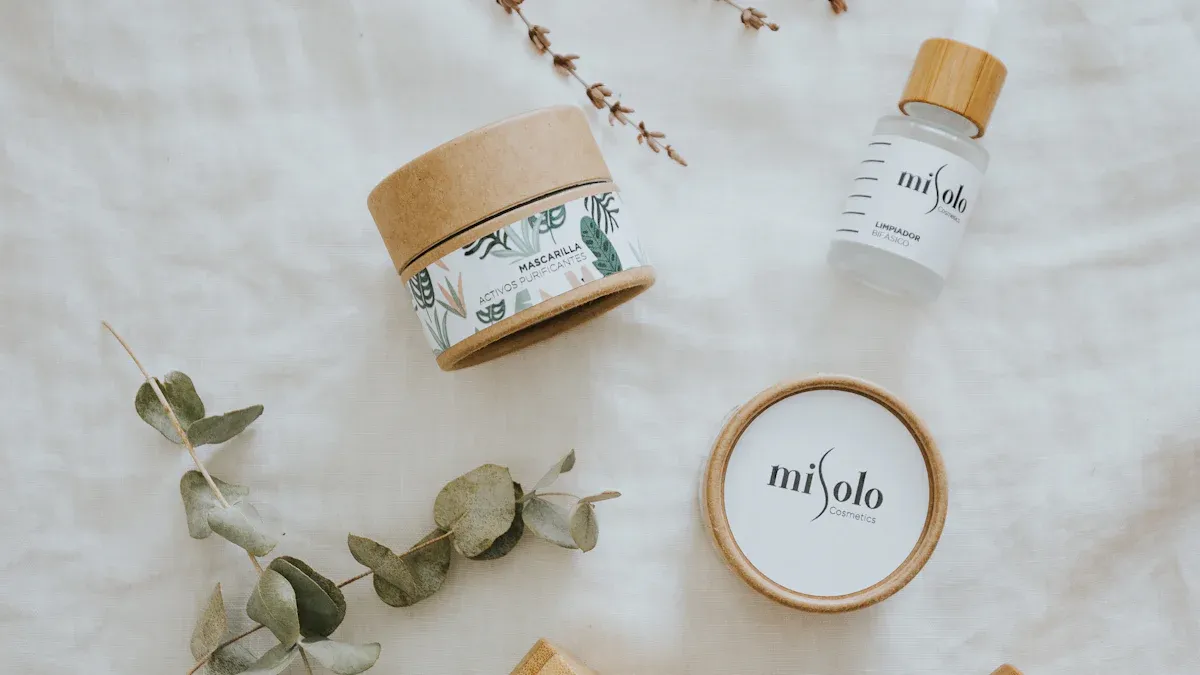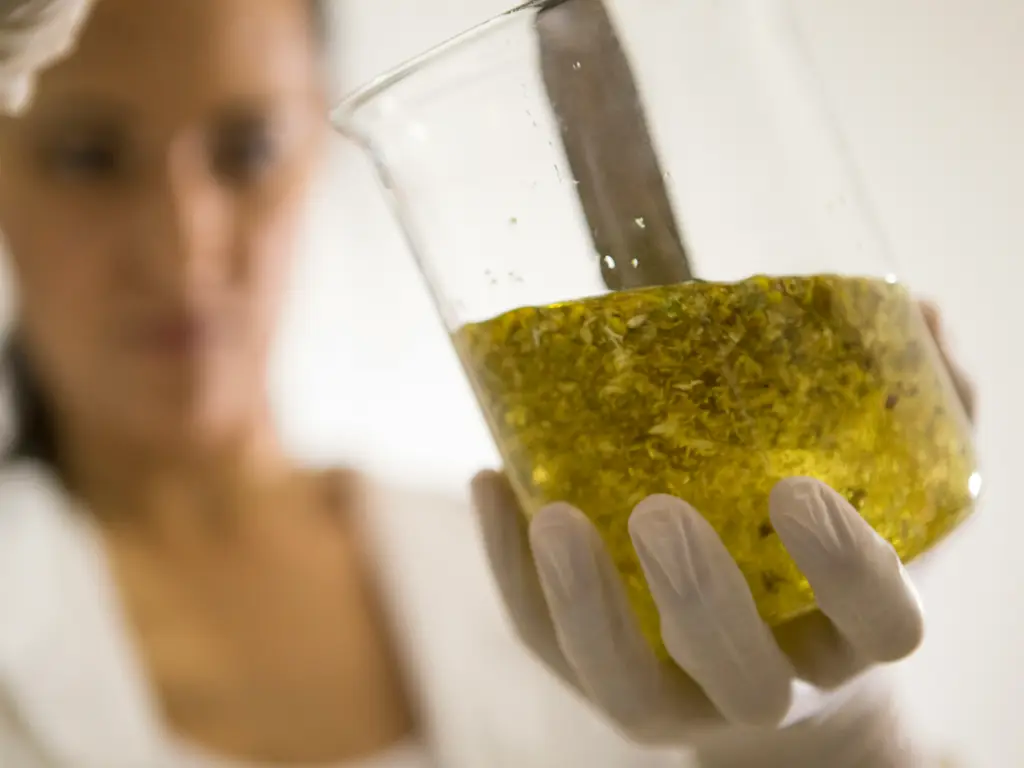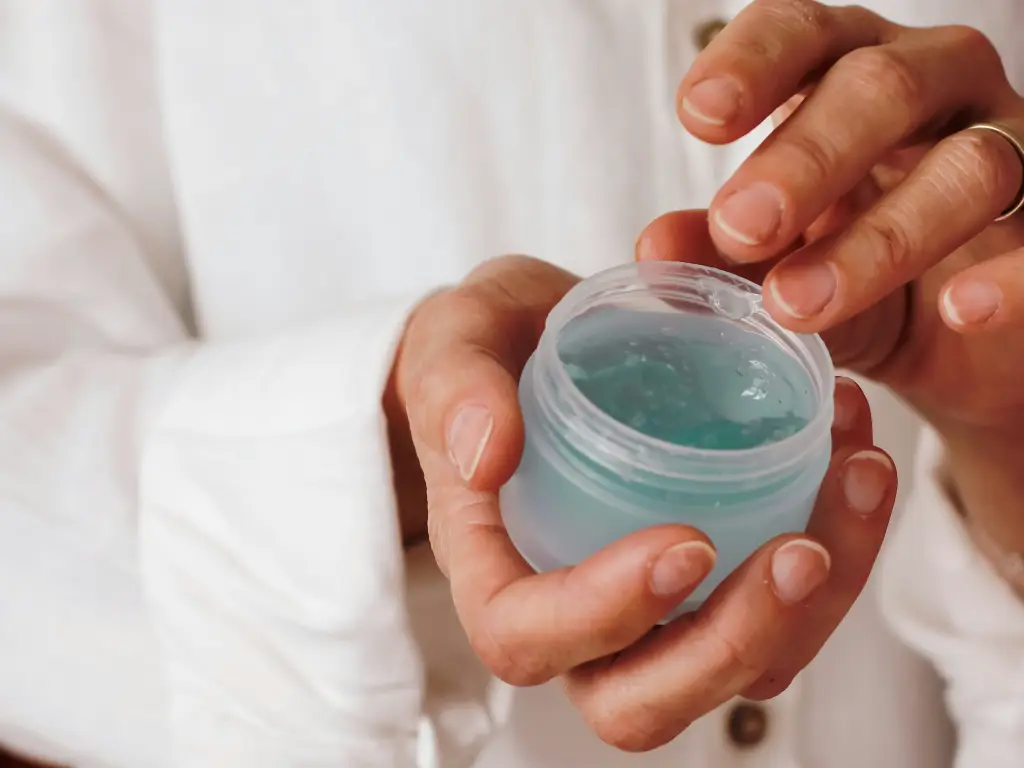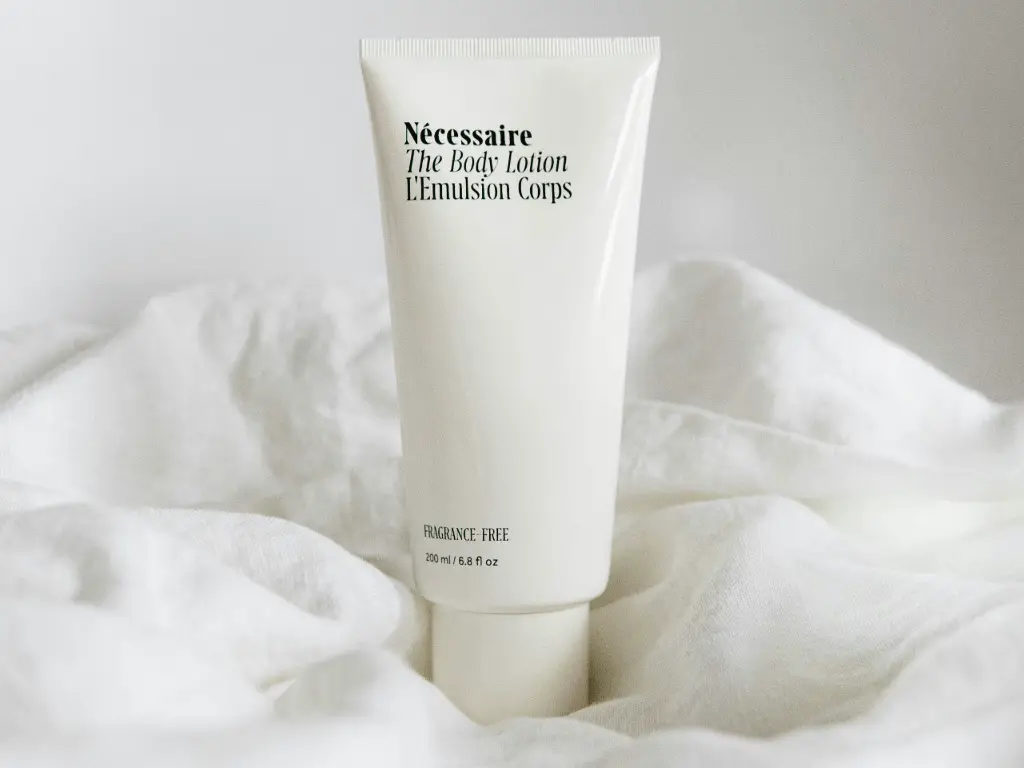
Reducing waste in beauty manufacturing plays a vital role in shaping a sustainable future through effective Waste Reduction Strategies. By adopting smarter practices, you can help conserve resources and improve operational efficiency. Por ejemplo, smart technologies optimize processes and cut down on material waste, while renewable energy sources like solar power lower greenhouse gas emissions. Streamlined production methods also reduce errors and save energy. These strategies aren’t complicated to implement. With simple changes, you can make a lasting impact on both the environment and your bottom line.
Understanding Waste in Beauty Manufacturing

Types of Waste in the Beauty Industry
The beauty industry generates significant waste across various stages of manufacturing. Packaging waste is one of the largest contributors, with over 120 billion units produced annually. Unfortunately, only 9% of this plastic is recycled globally. Single-use packaging, often made from non-biodegradable materials, adds to the growing environmental crisis. Además, excess product formulations, unsold inventory, and by-products from production processes contribute to waste.
Key statistics include:
Only 9% of plastic is recycled.
Approximately 8 million tons of plastic enter the ocean each year, much of it from single-use packaging.
By identifying these waste types, you can begin to address the root causes and implement effective waste management practices.
Environmental and Economic Impacts of Waste
The environmental and economic consequences of waste in beauty manufacturing are far-reaching. Packaging waste alone accounts for one-third of landfill contributions from this sector. The sourcing of raw materials, such as wood for paper-based packaging, emits billions of tons of CO2 annually. On the consumer side, switching to reusable bottles could reduce carbon emissions by 70%.
Impact Area | Quantified Evidence |
|---|---|
Sourcing Raw Materials | Global wood harvests projected to emit 3.5 a 4.2 billion tons of CO2 equivalent per year. |
Consumer Use of Products | Using reusable bottles could lead to a 70% reduction in carbon emissions in the beauty industry. |
Packaging Waste | Beauty industry accounts for 120 billion packaging units annually; one-third of landfill waste is from this sector. Only 14% of packaging is recycled. |
Reducing waste not only supports sustainability but also aligns with the principles of a circular economy, where resources are reused and repurposed to minimize environmental harm.
Challenges in Implementing Waste Reduction Strategies
While waste reduction is essential, implementing these strategies comes with challenges. High costs associated with sustainable materials, such as organic ingredients and refillable packaging, can deter manufacturers. Además, misinformation from vendors about the sustainability of materials complicates decision-making. The lack of regulation and standardization in defining sustainable practices further adds to the complexity.
Common challenges include:
Vendor misinformation about sustainability.
Lack of clear regulations and standards.
Overcoming these obstacles requires a commitment to innovation and collaboration with trusted partners who prioritize sustainability in manufacturing.
Waste Reduction Strategies for Beauty Manufacturers
Sustainable Ingredient Sourcing
Sourcing sustainable ingredients is one of the most impactful waste reduction strategies you can adopt. By choosing responsibly sourced raw materials, you minimize environmental harm and promote long-term sustainability. Sustainable sourcing ensures that ingredients are harvested or produced in ways that protect ecosystems and reduce waste. Por ejemplo, using renewable plant-based oils instead of petroleum-based alternatives can significantly lower your carbon footprint.
Tracking performance metrics can help you measure the benefits of sustainable ingredient sourcing:
Waste Management: Monitoring waste metrics reduces food waste and improves recycling.
Energy Conservation: Tracking energy usage optimizes consumption.
Water Usage: Measuring water usage supports conservation efforts.
Sustainable Sourcing: Metrics ensure responsible ingredient sourcing, minimizing environmental impact.
The financial benefits are equally compelling. Companies like Unilever have saved €1.2 billion in operational costs since 2008 by improving sustainable sourcing practices. Manufacturing efficiency improvements have also reduced waste and product defects, saving $227 million. These examples highlight how sustainability can drive both environmental and economic gains.
Eco-friendly Production Techniques
Adopting eco-friendly production techniques can transform your manufacturing processes. These methods focus on reducing energy consumption, minimizing waste, and using renewable resources. Por ejemplo, switching to energy-efficient machinery or utilizing solar power can significantly cut greenhouse gas emissions. Water recycling systems can also help conserve water during production.
One effective approach is implementing closed-loop systems. These systems recycle by-products and reuse them in the manufacturing process, reducing waste and lowering costs. Por ejemplo, leftover plant extracts from skincare formulations can be repurposed into other products, such as hair care treatments.
Training your team to adopt eco-friendly solutions ensures that these practices become an integral part of your operations. When everyone understands the importance of sustainability, your manufacturing processes become more efficient and environmentally friendly.
Innovative Packaging Solutions
Packaging innovation plays a crucial role in reducing waste. By rethinking how products are packaged, you can minimize the environmental impact of your manufacturing operations. Por ejemplo, using biodegradable or compostable materials reduces the amount of waste that ends up in landfills. Post-consumer recycled (PCR) materials divert waste from landfills and decrease the demand for virgin materials.
The effectiveness of innovative packaging solutions is evident in market trends:
Evidence | Description |
|---|---|
Market Growth | The sustainable packaging market is projected to grow from USD 292.71 billion in 2024 to USD 423.56 billion by 2029, reflecting a CAGR of 7.67%. |
Consumer Preferences | Rising consumer interest in sustainability drives the expansion of sustainable packaging solutions. |
Waste Reduction | Using PCR materials helps divert waste from landfills and reduces the demand for virgin materials. |
You can also explore refillable packaging models, which allow customers to reuse containers instead of discarding them. This approach not only reduces waste but also aligns with growing consumer demand for eco-friendly solutions. By prioritizing packaging innovation, you position your brand as a leader in sustainability while reducing your environmental footprint.
Recycling and Upcycling Practices
Recycling and upcycling offer powerful solutions for reducing waste in beauty manufacturing. Recycling focuses on converting waste into reusable materials, while upcycling transforms discarded items into higher-value products. Both practices help you minimize waste and conserve resources.
By adopting recycling practices, you can reduce the amount of waste sent to landfills. This approach also decreases the demand for new materials, conserving energy and reducing carbon emissions. Upcycling takes this a step further by creatively repurposing waste into innovative products. Por ejemplo, leftover coffee grounds can be upcycled into exfoliating scrubs, giving waste a second life while reducing environmental impact.
Here are some key benefits of recycling and upcycling in beauty manufacturing:
They reduce waste sent to landfills, helping to address global waste management challenges.
Upcycling minimizes the need for new resources, conserving energy and reducing emissions.
These practices create job opportunities in communities with abundant waste materials.
The growing market for upcycled products opens doors for entrepreneurial ventures.
Increased consumer awareness of environmental costs drives demand for eco-friendly practices.
Recycling and upcycling also align with the shift toward renewable and biodegradable packaging materials. By embracing these practices, you can position your brand as a leader in sustainability while meeting the expectations of environmentally conscious consumers.
Eliminating Excess Packaging
Excess packaging remains one of the biggest challenges in beauty manufacturing. Many products come with layers of unnecessary wrapping, contributing to global plastic pollution and depleting natural resources. Eliminating excess packaging can significantly reduce waste and improve your environmental footprint.
Innovative brands are already leading the way. Por ejemplo, SBTRCT has introduced solid-state skincare products that eliminate plastic and drastically reduce water content. These products demonstrate how minimal packaging can deliver high performance with minimal environmental impact.
The average UK household produces around 23 kg of plastic packaging waste annually, much of it from cosmetics and personal care products. By reducing packaging, you can help address this issue while appealing to eco-conscious consumers. Simple changes, such as using recyclable materials or switching to refillable containers, can make a big difference.
Packaging waste not only harms the environment but also increases production costs. By streamlining your packaging processes, you can save money and reduce waste simultaneously. Focus on designing packaging that uses fewer materials without compromising product quality. This approach not only supports sustainability but also enhances your brand’s reputation as a responsible manufacturer.
Packaging waste is one of the most pressing environmental challenges in the cosmetics industry. By eliminating excess packaging, you can contribute to a cleaner planet and a more sustainable future.
Practical Tips for Implementing Waste Reduction
Conducting a Comprehensive Waste Audit
A waste audit is the first step in identifying inefficiencies in your manufacturing processes. By analyzing the waste generated at each stage, you can pinpoint areas for improvement. Start by categorizing waste into types, such as packaging, raw materials, and by-products. This approach helps you understand where the most waste occurs and why. Por ejemplo, excess raw materials might indicate over-ordering or inefficient production methods.
Use simple tools like spreadsheets or specialized software to track waste data. Record the volume, type, and source of waste over a set period. Once you have this information, calculate the cost of waste to your business. This analysis not only highlights financial losses but also reveals opportunities to save money by reducing waste.
After completing the audit, set measurable goals for improvement. Por ejemplo, aim to reduce packaging waste by 20% within six months. Regularly review your progress to ensure your strategies are effective. A waste audit provides a clear roadmap for minimizing waste and improving sustainability in your operations.
Consejo: Involve your team in the audit process. Their insights can uncover hidden inefficiencies and foster a culture of sustainability.
Partnering with Sustainable Suppliers
Collaborating with sustainable suppliers can significantly lower waste in your manufacturing processes. Suppliers who prioritize eco-friendly practices often provide materials that are responsibly sourced and less wasteful. Por ejemplo, plant-based ingredients from regenerative agriculture reduce environmental harm compared to conventional farming methods.
Here’s how leading companies have benefited from sustainable supplier partnerships:
Company | Initiative Description | Impact on Production Waste |
|---|---|---|
L’Oréal | Partnering with suppliers for regenerative agriculture to source plant-based ingredients | Reduces environmental footprint of ingredients |
Givaudan | Developing lab-grown fragrance molecules to replace resource-intensive natural extracts | Lowers resource consumption and waste |
Estée Lauder | Working with suppliers to eliminate deforestation-linked ingredients like palm oil | Reduces waste linked to unsustainable sourcing |
Unilever | Using AI-driven inventory optimization to minimize overproduction | Cuts excess inventory and waste disposal |
Lush | Establishing the Green Hub for recycling and upcycling materials | Promotes circular economy and reduces waste |
When choosing suppliers, ask about their sustainability certifications and waste reduction initiatives. Look for partners who use renewable energy, recycle materials, or offer innovative solutions like biodegradable packaging. These partnerships not only reduce waste but also enhance your brand’s reputation as an environmentally conscious manufacturer.
Note: Building long-term relationships with sustainable suppliers ensures consistent access to eco-friendly materials and fosters mutual growth.
Employee Training on Waste Reduction
Your employees play a crucial role in implementing waste reduction strategies. Training them on best practices ensures that everyone contributes to your sustainability goals. Start by educating your team about the environmental and economic impacts of waste. Use real-world examples to illustrate how small changes can make a big difference.
Provide hands-on training sessions to teach waste reduction techniques. Por ejemplo, show employees how to properly sort recyclable materials or optimize production processes to minimize waste. Encourage them to share ideas for improving efficiency. Recognizing and rewarding innovative suggestions can motivate your team to stay engaged.
Regularly update your training programs to reflect new technologies and industry trends. Por ejemplo, if you adopt AI-driven inventory management, train your staff on how to use the system effectively. Continuous learning ensures that your team remains equipped to tackle waste challenges as they arise.
Consejo: Create a waste reduction task force within your company. This group can lead initiatives, monitor progress, and keep everyone accountable.
Leveraging Technology for Process Optimization
Technology plays a pivotal role in optimizing manufacturing processes and reducing waste. By leveraging advanced tools and systems, you can streamline operations, minimize inefficiencies, and achieve sustainability goals. Por ejemplo, automated machinery reduces material waste by ensuring precise measurements during production. Similarly, AI-driven inventory management prevents overproduction, which often leads to excess waste.
Tracking metrics is essential for evaluating the effectiveness of technology in waste reduction. Below is a table showcasing key metrics and their targets:
Métrico | Target/Goal |
|---|---|
Annual Waste Reduction | |
Recyclable Packaging Inclusion | 80% of materials |
Year-over-Year Water Usage Reduction | 15% decrease |
Energy Consumption Optimization | Continuous improvement |
These metrics provide a clear roadmap for improving manufacturing efficiency. Por ejemplo, reducing water usage by 15% annually not only conserves resources but also lowers operational costs.
You can also adopt closed-loop systems to recycle by-products and reuse them in production. This approach reduces waste while maximizing resource utilization. Por ejemplo, leftover ingredients from skincare formulations can be repurposed into hair care products.
Consejo: Invest in software that tracks waste data in real time. This allows you to identify inefficiencies and make immediate adjustments to your processes.
Exploring Refillable and Supersized Product Models
Refillable and supersized product models offer innovative solutions for reducing waste in beauty manufacturing. These models cater to growing consumer demand for sustainability and convenience. Refillable packaging allows customers to reuse containers, significantly cutting down on single-use waste. Supersized products reduce the need for frequent repurchases, minimizing packaging waste over time.
A recent study highlights the impact of refillable packaging on consumer behavior:
Descripción de la evidencia | Percentage |
|---|---|
Consumers motivated by lower price of refills | |
Consumers motivated by lower environmental impact | 72.5% |
Consumers familiar with refillable packaging | 76.6% |
Consumers who purchase refillable packaging for environmental reasons | 80.5% |
Refillable models align with consumer preferences for eco-friendly solutions. Experts note that these models are driven by the desire for sustainable lifestyles and the convenience of reusing packaging. Supersized products, por otro lado, reduce the frequency of purchases, which lowers the overall environmental impact of packaging production.
There is a growing consumer desire for sustainable lifestyles.
Increased awareness of the environmental impact of product packaging.
A significant shift in consumer demand towards eliminating waste.
By adopting refillable and supersized models, you can position your brand as a leader in sustainability. These approaches not only reduce waste but also enhance customer loyalty by offering practical and eco-conscious solutions.
Case Studies and Success Stories

Leading Brands in Waste Reduction
Several beauty brands have set remarkable examples in reducing waste during manufacturing. Lush, for instance, has pioneered the use of “naked” products, which eliminate packaging altogether. Their solid shampoos and conditioners not only reduce plastic waste but also conserve water during production. Similarly, Garnier has embraced upcycled ingredients, repurposing byproducts from other industries to create eco-friendly formulations. This approach minimizes waste while promoting sustainability.
Another standout is Aveda, which uses 100% post-consumer recycled materials for its packaging. By doing so, they divert significant amounts of plastic from landfills. These brands demonstrate that adopting sustainable practices can lead to both environmental and business success.
Lessons from Successful Implementations
You can learn valuable lessons from these brands’ efforts. First, prioritize innovation in your manufacturing processes. Por ejemplo, switching to solid product formats reduces the need for excess packaging and water. Second, collaborate with suppliers who share your commitment to sustainability. Brands like Aveda have shown that using recycled materials not only reduces waste but also resonates with eco-conscious consumers.
Además, transparency plays a key role. Sharing your waste reduction goals and achievements builds trust with your audience. Consumers increasingly prefer brands that align with their values, making sustainability a competitive advantage.
Small Changes with Big Impacts
Small operational changes can yield significant results in waste reduction. Upcycling byproducts, such as coffee grounds or fruit peels, into beauty formulations is gaining traction. This practice reduces waste while creating unique, high-value products. Solid product formats, like bar soaps and solid shampoos, also cut down on packaging and water usage, making them a popular choice among consumers.
The shift toward recyclable and reusable materials, such as cork and wood, further minimizes plastic waste. These small adjustments in manufacturing not only reduce environmental impact but also enhance your brand’s reputation as a sustainability leader.
Consejo: Start with one small change, such as introducing a solid product line or switching to recyclable packaging. These steps can make a big difference over time.
Oully’s Commitment to Sustainable Manufacturing
Oully stands as a leader in sustainable beauty manufacturing. With over a decade of experience, the company has integrated eco-conscious practices into every stage of its operations. You can see this commitment in their ingredient sourcing, production methods, and packaging innovations.
Oully prioritizes sustainable ingredient sourcing. They work with suppliers who follow ethical and environmentally friendly practices. Por ejemplo, they use plant-based oils and renewable resources to reduce their environmental footprint. This approach ensures that every product aligns with your values as a conscious consumer.
Their 45,000 sq. pie. facility operates with efficiency and sustainability in mind. Oully employs advanced technologies to minimize waste during manufacturing. Closed-loop systems recycle by-products, while energy-efficient machinery reduces power consumption. These measures not only lower waste but also enhance operational efficiency.
Packaging innovation is another area where Oully excels. They offer biodegradable, compostable, and post-consumer recycled materials for product packaging. By doing so, they help brands reduce their reliance on single-use plastics. Oully also supports refillable packaging models, which allow you to reuse containers and cut down on waste.
Note: Oully’s certifications, including FDA, ISO, and cGMP, reflect their dedication to quality and sustainability. These standards ensure that their manufacturing processes meet the highest environmental and safety benchmarks.
By choosing Oully as your manufacturing partner, you contribute to a cleaner planet. Their commitment to sustainable manufacturing helps you align your brand with eco-friendly practices while meeting consumer demand for greener products.
Reducing waste in beauty manufacturing is essential for creating a sustainable future. By adopting waste reduction strategies, you can conserve resources, lower costs, and meet growing consumer demand for eco-friendly products. These practices are not complicated. Simple steps, like using sustainable materials or optimizing production processes, can make a significant difference.
The long-term benefits of waste reduction go beyond environmental impact. They improve operational efficiency and enhance your brand’s reputation. Start small, but stay consistent. Every action you take contributes to a cleaner planet and a more responsible manufacturing industry.
Take Action: Begin your journey toward sustainability today. Conduct a waste audit, explore refillable packaging, or partner with eco-conscious suppliers. Your efforts will inspire change and drive progress in beauty manufacturing.
Preguntas frecuentes
What are the easiest ways to start reducing waste in beauty manufacturing?
Begin with small steps. Conduct a waste audit to identify inefficiencies. Switch to recyclable packaging and partner with sustainable suppliers. These changes require minimal effort but can significantly reduce waste and improve your environmental impact.
How can refillable packaging benefit my brand?
Refillable packaging reduces single-use waste and appeals to eco-conscious consumers. It also lowers production costs over time. By offering refillable options, you position your brand as environmentally responsible, which builds trust and loyalty among your customers.
Is sustainable ingredient sourcing expensive?
Sustainable sourcing may seem costly initially, but it saves money in the long run. It reduces waste, improves efficiency, and aligns with consumer demand for eco-friendly products. Partnering with trusted suppliers ensures you get high-quality, responsibly sourced materials.
What role does technology play in waste reduction?
Technology optimizes manufacturing processes. Automated systems reduce material waste by ensuring precision. AI-driven tools prevent overproduction and track waste metrics in real time. These innovations help you save resources and improve operational efficiency.
Why is eliminating excess packaging important?
Excess packaging contributes to global plastic pollution and increases production costs. By reducing unnecessary layers, you conserve resources and appeal to eco-conscious consumers. Simple changes, like using biodegradable materials or refillable containers, make a big difference.
Consejo: Start small by redesigning one product’s packaging to use fewer materials. This step can inspire broader changes.
















